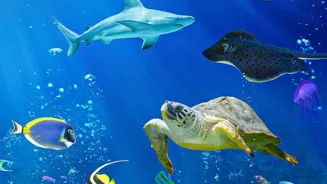Dive into the mesmerizing world of marine life diversity in our oceans. Discover 7 key facts about these incredible ecosystems!
Mumbai, India - Our oceans, covering over 70% of the Earth, are indeed teeming
with life, and host a mind-boggling array of plants and animals. Most Indians perhaps, only familiar with what they see on tv may not realise the true extent of biodiversity hidden beneath the waves.

Forget your daily dose of Bollywood masala, and buckle up for this educational journey into the incredible world of marine ecosystems.
A Treasure Trove of Species:
The oceans are estimated to house millions of species, many of which are still undiscovered. From tiny plankton drifting in the currents to gigantic whales traversing the globe, the sheer variety is astounding.
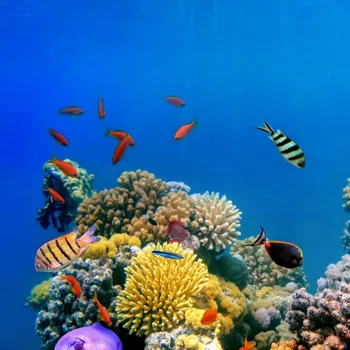
Coastal areas like the Sundarbans mangrove forests and the coral reefs of Lakshadweep are biodiversity hotspots. New species are constantly being found, so who knows what wonders remain hidden waiting to be discovered in our oceans! This hidden world holds secrets which benefit all.
Coral Reefs: Underwater Rainforests
Coral reefs, often called the "rainforests of the sea" are home to an estimated 25% of all marine life. They are formed by tiny animals called coral polyps, which build hard skeletons around themselves.
These skeletons create complex structures that provide shelter and food for a multitude of species. Coral reefs are important for the growth of marine species and also protect our coastlines from erosion; it can be said that they are the first line of defence against the ocean and its ways.
Plankton: The Tiny Titans
Plankton, tiny organisms including plants (phytoplankton) and animals (zooplankton), are the base of the marine food web. Phytoplankton, like plants, use sunlight to produce energy through photosynthesis. They produce a significant portion of the world's oxygen.
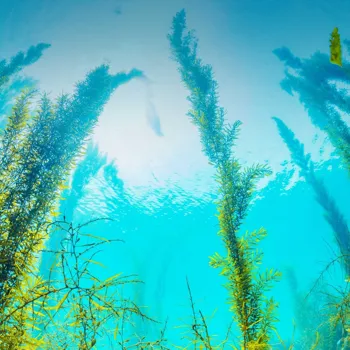
Zooplankton feeds on phytoplankton and, in turn, becomes food for larger animals. Plankton may be small, but they are essential to the health of the oceans. Plankton are present in all waters including local rivers. Taking care of these waters is critical as a result.
Marine Mammals: Intelligent Giants
The ocean is home to a wondrous array of marine mammals, including whales, dolphins, seals, and dugongs. They have adapted to life in the water, though are related to their land ancestors.
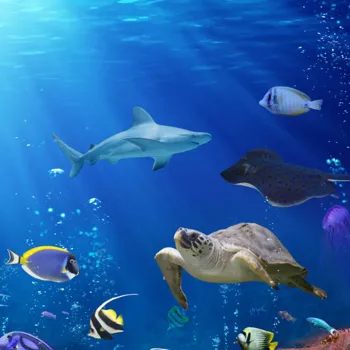
Some whales are known for their long migrations, travelling thousands of kilometres each year to feed and breed. Scientists are always amazed by these ocean wanderers, from their communication skills to their deep dives. These species, however, are also deeply affected by human activities.
Deep Sea Wonders:
The deep sea is one of the most unexplored environments on Earth. It is characterised by extreme pressure, cold temperatures, and complete darkness. Despite these difficult conditions, it is teeming with life, with unique and bizarre animals that have adapted to this harsh environment.
Scientists are using cutting-edge technology to explore the deep sea. These creatures of the deep help us understand what more we may know of the world we live in today.
Mangrove Forests: Coastal Nurseries
Mangrove forests are saltwater ecosystems found on the coastlines of tropical and subtropical regions. They provide important habitat for many species of fish, shellfish, birds, and other animals. Mangroves protect coastlines from erosion and storm surges.
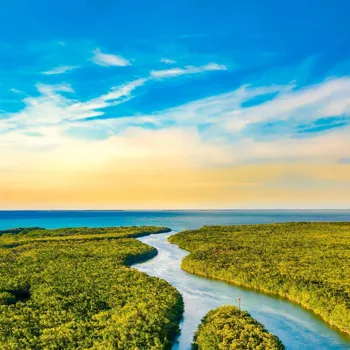
They act as nurseries for fish and can be considered the cradle in which marine life is born as it grows. They also filter pollutants and help to maintain water quality. Protecting mangrove forests is crucial for the health of coastal ecosystems.
The oceans are vital for the well-being of our planet and our lives. They provide us with food, regulate the climate, and produce oxygen. It is essential that we protect these amazing ecosystems for future generations.
We can do this by reducing pollution, managing fisheries sustainably, and addressing climate change.
